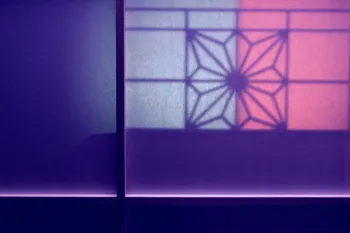Kumiko woodworking, a craft that has deeply resonated with both skilled artisans and woodworking enthusiasts, presents a realm of boundless opportunities for those aspiring to master the finesse of precision and design. In our prior blog post, we introduced you to the fundamental elements of Kumiko. Today, let's embark on a deeper exploration of the advanced techniques that can elevate your Kumiko creations to new heights.
One of the intriguing facets of Kumiko lies in the diverse array of patterns at your disposal. In advanced Kumiko, craftsmen often push their boundaries by experimenting with intricate and complex patterns such as kikkou (tortoiseshell) or chouji (cloverleaf). These patterns demand an extraordinary level of skill and precision, challenging the very limits of what can be achieved with wood.
As you advance along your Kumiko journey, consider introducing the use of differently-hued woods to enhance the visual appeal of your works. The interplay of various wood species can create breathtaking contrasts within your patterns. Moreover, the utilization of contrasting wood colours can bestow upon your Kumiko pieces a truly distinctive and visually captivating quality.
To attain the zenith of perfection in Kumiko, it is imperative to master the art of precise joinery. Common joints encompass the half-lap, bridle joint, and mitered half-lap, all of which necessitate exact measurements and flawless craftsmanship to ensure a seamless fit.
For the most intricate Kumiko designs, exploring the use of delicate wooden strips, known as "Kumiko-gushi," is a worthwhile endeavour. These strips are meticulously cut and interwoven, giving rise to intricate patterns that are bound to leave viewers in awe.
In advanced Kumiko woodworking, the cornerstone of success is unwavering dedication and continuous practice. By refining your skills, experimenting with intricate designs, and pushing the boundaries of your creative endeavours, you can produce truly extraordinary pieces that exemplify the unparalleled beauty of Kumiko woodworking. Whether you're crafting traditional shoji screens or contemporary decorative art, Kumiko remains a woodworking technique that offers a lifelong journey of exploration and artistic evolution.


